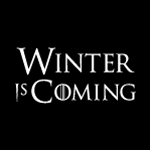Thrones visual effects team profiled in recent articles
The visual effects team that worked on Game of Thrones has been profiled in a couple of recent articles. The company, called BlueBolt, is a London-based visual effects studio. They are a newly formed studio, but their founders have years of experience on big time Hollywood films such as Harry Potter, X-Men and The Chronicles of Narnia.
These two recent interviews, one with Below the Line and the other with Animation World Network, give us a bit of insight into how these artists created the sweeping vistas and other computer-generated effects for Game of Thrones. Some notable excerpts after the break, click the links for the full articles (and more before/after photos like the one above). Beware of season one spoilers in both of these links!
On the differences between working in film and TV:
The show’s FX supe, Angela Barson, also parses the differences between features and episodic: “One of the big differences between working on a TV series vs a feature film is the hierarchy of people who need to give approval on shots. On a feature film we would usually get approval from the VFX supervisor and then the director. On this we had about 10 different levels of producers, co-producers, exec-producers, etc. who all had to give approval.” But the extra hoops didn’t affect the quality of the work, since, she adds, “a good thing about working on an HBO TV series is that the standard of VFX work expected is of exactly the same high quality as with feature film work.”
“The budget was tight for VFX, but not for television,” Taylor continues. “It was ambitious from the start. We had to take an early call on the approach to certain shots, what was a 3D build, what was a 2D matte painting, etc. However, in advance, BlueBolt realized that if they did some simple builds on certain key environments which were only ever going to be matte paintings it would help further down the line. These simple builds allowed us to move the actual buildings around (Red Keep, The Twins) to get the layout working on the individual shots with the lighting working on the original plates. Our element shoot provided of lots of blood spurts, snow, breath, which became invaluable in post for all the VFX houses. Violence presented no problems; there appeared to be no limits to how graphic we could be in depicting the horror.”
On creating the Wall:
“When the rangers exit into the North we see for the first time some idea of the sheer scale of the Wall,” he continues. “This was created by matte painting to extend a physically snowed up area around the live action. Our aim was to create something that had a hint of man-made structure about it and had to appear completely insurmountable or unscalable as it was built to defend from the creatures of the North. The edge of the forest was introduced using stills of snowy pines and atmospheric mist and snow composited in to create depth and movement.
On creating the Eyrie:
Another significant feature of the series is the Eyrie. This is an impenetrable fortress high up on a rock base. “We went through a number of iterations of the concept on this being one of the most fantastical pieces of the series,” McInnes says. “There were several options considered as to how the access should work in conjunction with the practicalities and location of shooting the arrival of Catelyn and her entourage. Ultimately, we opted for them rounding a bend on the edge of a gorge where we see the Eyrie perched in the distance only accessible via a guarded rock arch bridge.”
“…The Eyrie was always based on being an impenetrable castle on top of a high rock and originally we were going to use the Zhangjiajie Mountains in China, but due to the base plates being shot in Ireland, it was better for us to use the rock formations from Meteora in Greece.”
On the books’ influence in designing the effects:
Did Martin’s book have any additional influence on the “look” of the effects? Barson notes that “we were only given the scripts, but myself and many members of the team also read the books which gave us an even broader understanding. It could sometimes be useful to know where things were heading in later series as this would influence our designs.”
“I always felt,” McIness adds, “there was a definite leaning to and attention paid to how it was in the book tempered with the practicalities of locations and shooting.”




Spoiler Alert!
Please take care to tag spoilers in your comments by wrapping them with <spoiler></spoiler>. Spoilers in comments are hidden by a gray overlay. To reveal, simply hover or tap on the text!